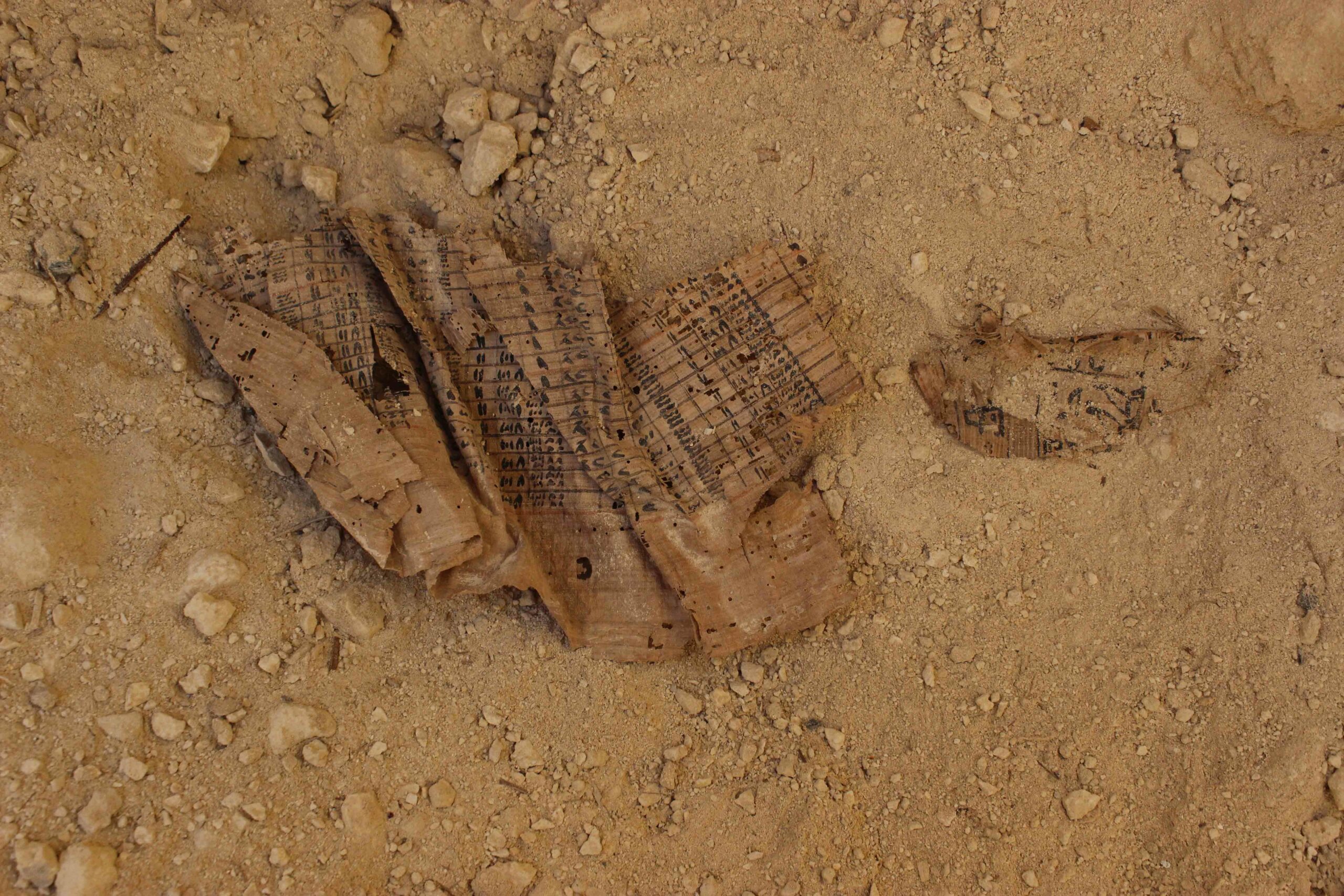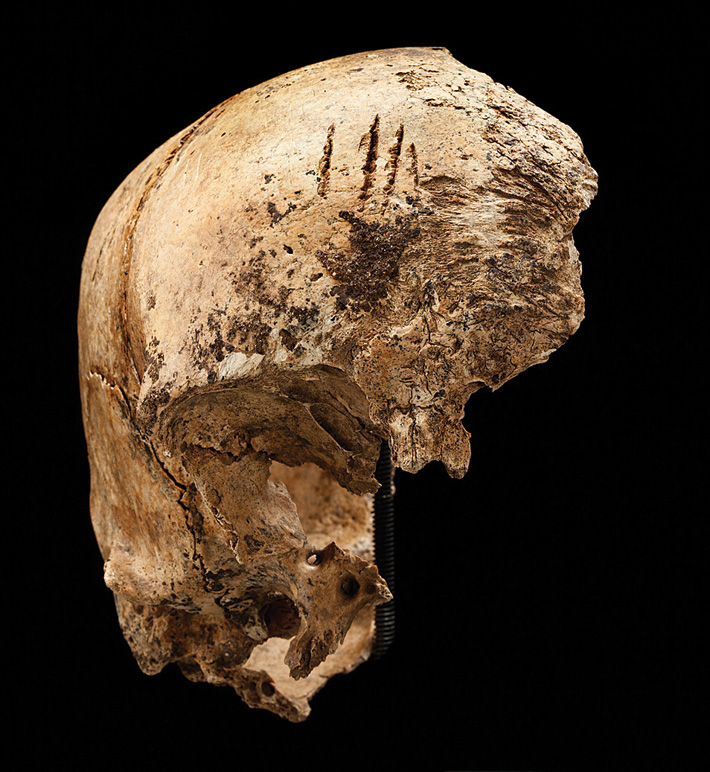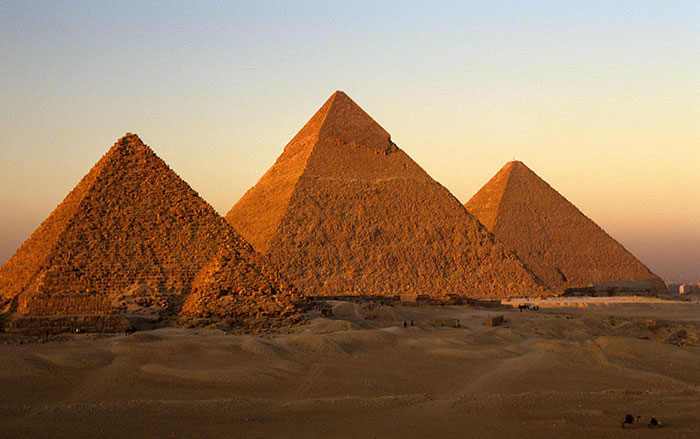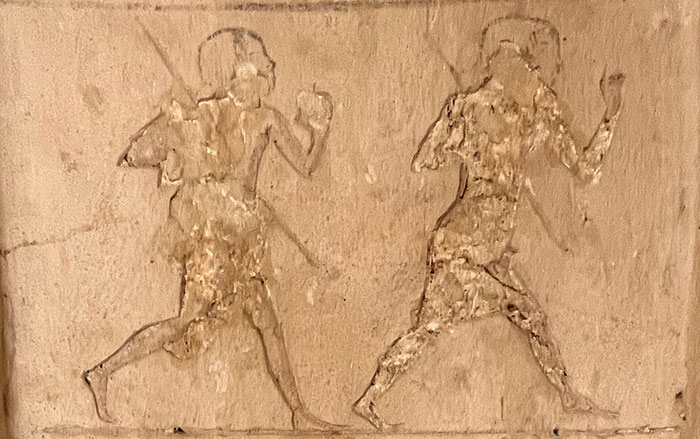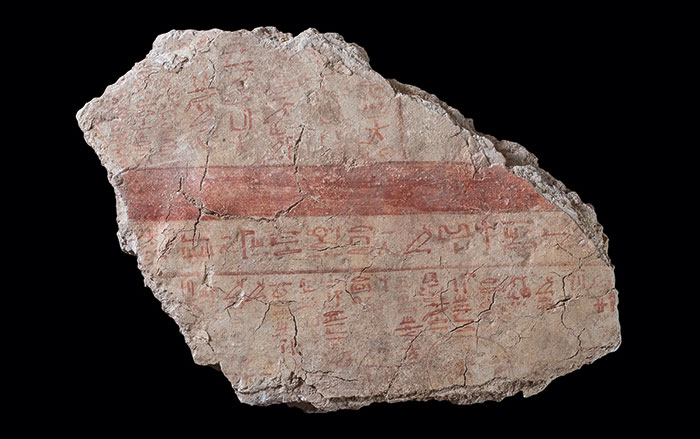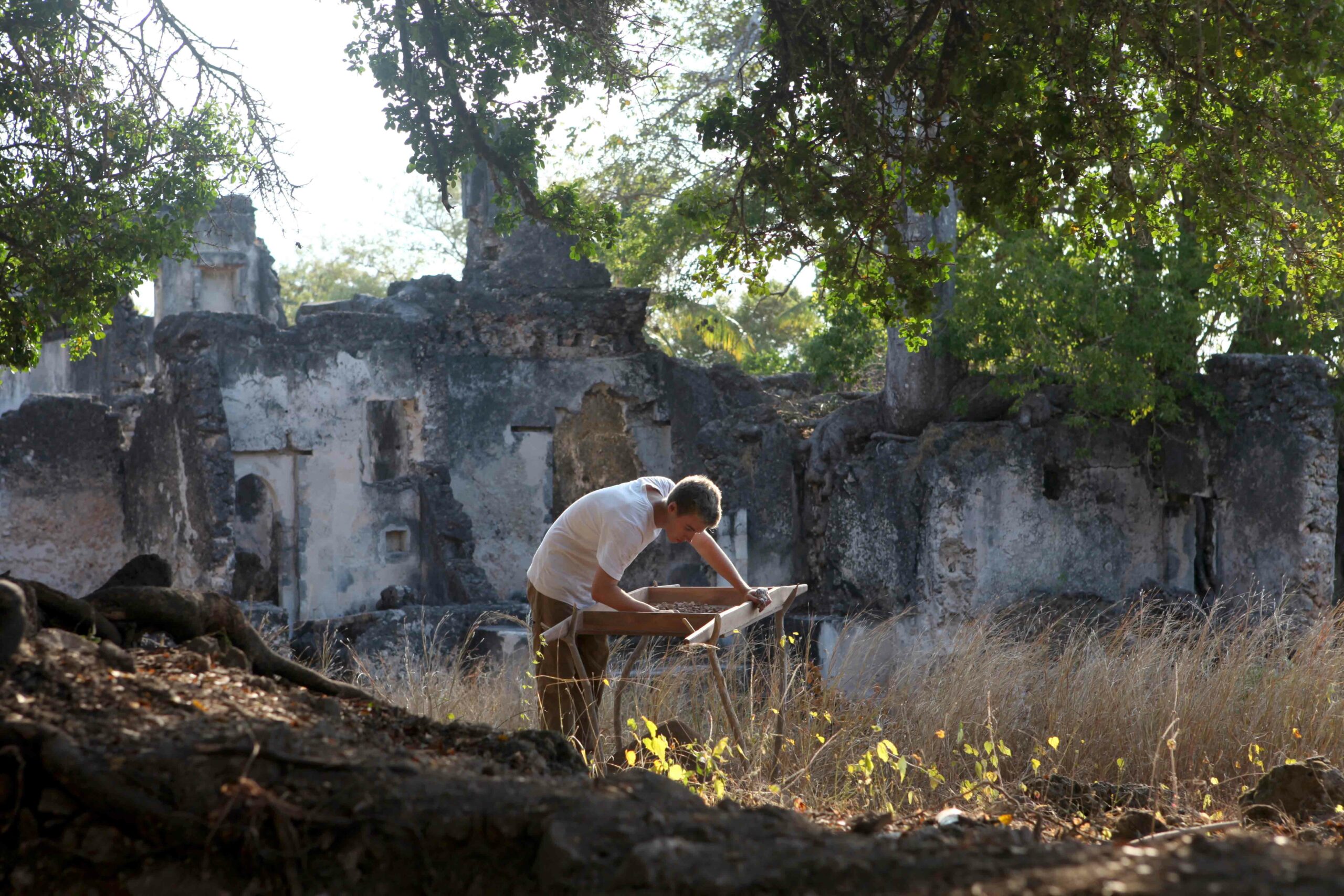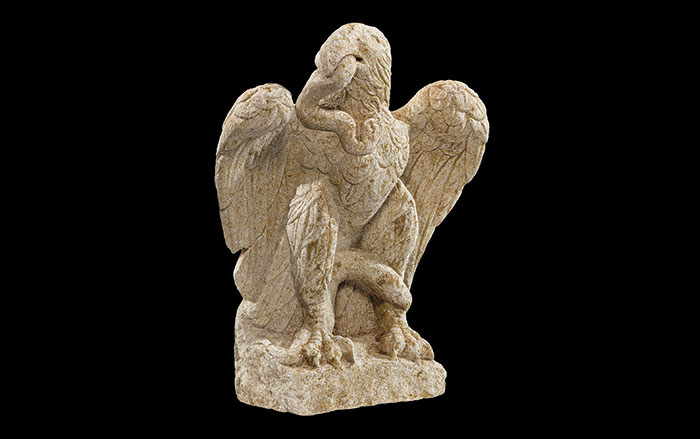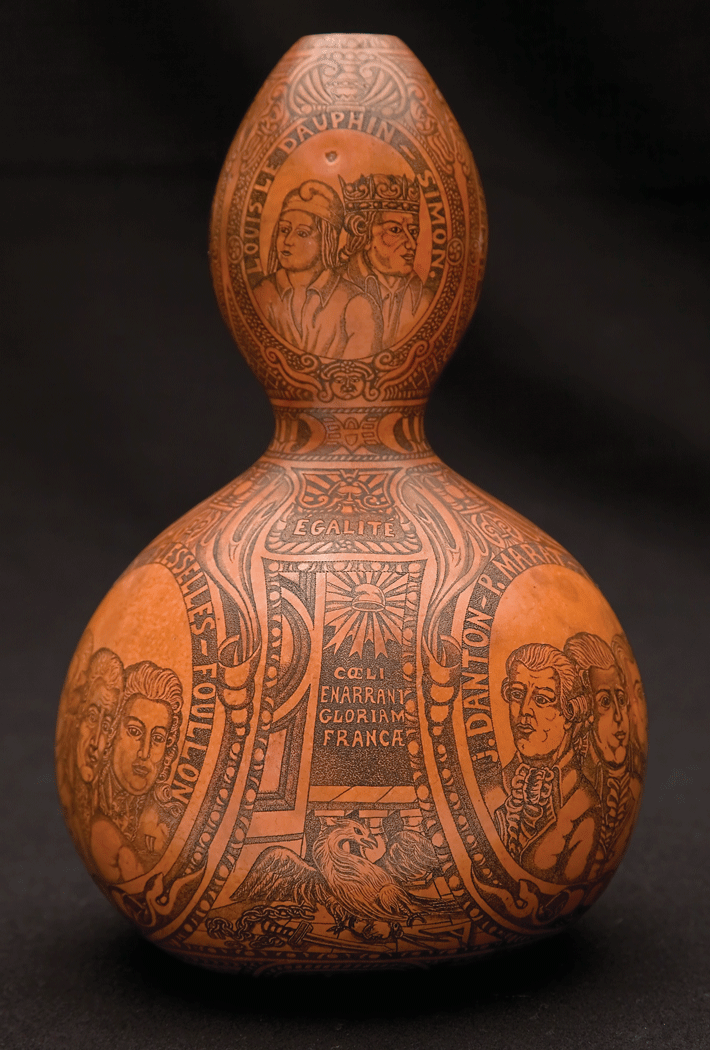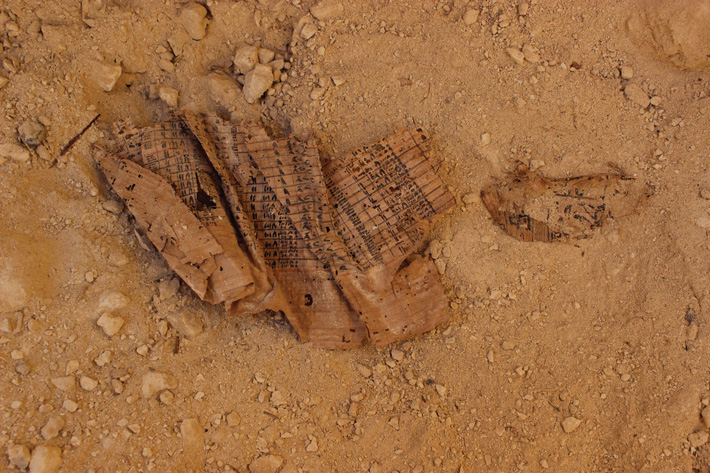
While excavating an underground storage system cut into bedrock at Wadi el-Jarf, nearly 110 miles south of Suez and close to the Red Sea, archaeologists discovered fragments of boats, ropes, and pottery. The artifacts date to the reign of the 4th Dynasty King Khufu, or Cheops, builder of the Great Pyramid of Giza, who ruled from 2551 to 2528 B.C.

Beginning on the shore and continuing underwater, an assembly of large blocks and limestone slabs inscribed with Cheops’ name form the remains of an L-shaped jetty. Limestone anchors from numerous large ships testify to voyages launched to export copper and stones from the Sinai Peninsula to the Nile Valley. “Ancient inland harbors are known on riversides, but the jetty of Wadi el-Jarf predates by more than 1,000 years any other known structure of this kind,” says expedition leader Pierre Tallet, a University of Paris-Sorbonne Egyptologist, about the 4,500-year-old harbor.
Tallet and colleagues also found 10 very well-preserved papyri among hundreds of fragments. The documents, which are proving difficult to reassemble, are the oldest papyri ever found in Egypt. One fragment is a diary written by Merrer, an Old Kingdom official involved in the building of the Great Pyramid. Though actual details of the pyramid’s construction are scarce, Tallet says, "the journal provides a precise account for every working day."


